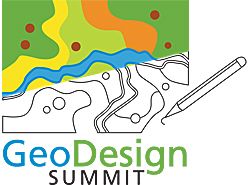Thoughts on the GeoDesign Summit

I’m sure many of you have been following #geodesign on Twitter, but I thought I’d add some of my deeper thoughts. First off, yes everyone in attendance realizes that we’ve all been doing this since the beginning of time. GeoDesign wasn’t invented by anyone in particular, that was clear to everyone.
So I guess the next question what is GeoDesign and why do we need to even define it, especially if we’ve been doing this for years anyway Since we’ve all be already been doing this for years shouldn’t this be easy to define since we already have an understanding of it A Wikipedia entry has been started and I’d encourage everyone to take a look at it and refine it based upon your experiences.
I think a couple things helped bring so many people together from so many different disciplines. With Architects, Planners, Engineers, Technologists, Researchers, Professors, Graduate Students and “other”; there was academia, government and private industry. The one person in our industry that has the pull to get this done is of course Jack Dangermond. He was also gracious enough to allow the organizers to use the new ESRI Q Building which was perfectly set up for a conference of this size.
Adena Schutzberg and Matt Ball both did a great job diving deep into the conference and it would be a good idea to read up on what was discussed and what needs to be done to move forward. What I’m going to talk about is what I think came out of the Summit and what should be the next steps.
First off, there was a little push-back that was acknowledged at the Summit which seemed to revolve around the fact that some small group of people seemed to think they could take ownership of something everyone has been doing for years, GeoDesign. I was also a little on edge about what might have come out from this Summit, but in the end it was unfounded. The group of folks from Michael Goodchild to Carl Steinitz all where very pragmatic about GeoDesign, how we involve more in the process of design (how crowdsourcing can be involved), to even deeper issues such as how we must fundamentally change how we as humans impact our environment.

Many showed examples of GeoDesign projects that they are currently work on to ones that were completed decades ago. Also despite the Summit occurring on ESRI’s campus, there were many examples showed that included non-ESRI technology such as GRASS, Google Earth and SketchUp. Jack also stood up on stage and hoped next year the organizers could include other software platforms and technologies that weren’t on stage this year.
So this brings up what to do next. Where do we go from here. Jack asked everyone in attendance if they thought we should move forward with the GeoDesign concept and everyone agreed we should. The details on how were to do so was what we discussed Friday morning. There will be a GeoDesign Summit next year. Tom Fisher the Dean for the College of Design at University of Minnesota offered to host it there. Given the warm weather though many though Redlands would be a great location to hold it again (Mid 70s in January is hard to beat). Jack said that if the committee wanted to hold it at ESRI again he would offer up the facilities again. Jack also said he wanted to unbrand the summit from ESRI and have it stand alone. To do this the Summit will be moving off of the ESRI servers on to its own and engage other potential stakeholders.
Since there was so much content created and organized there was a discussion on how to best disseminate the data out to everyone. This was probably the most contensious discussion. On one had you have those who wanted to write books (grey hairs) and on the other there were those who wanted to set up a wiki and get more community involvement. In the end it appears we will have both, a GeoDesign book you can get signed by your favorite GeoDesigner and a wiki the community can showcase their ideas and collaborate.
One problem is how to get this information out to the community at large. Organizations such as the APA have the tools in place (and not ESRI branded) to facilitate getting the word out to their members. Since there were many researchers present, there was also questions about how we can get funding in place from NSF or possibly even the World Bank since better planning and design is critical to helping reverse the destruction of the planet.
So bottom line I admit I’m not one with too much patience for “University think” and there was plenty at the first GeoDesign Summit. But at the same time there was so much practicality shown that it isn’t hard to want to get Design and GIS more interconnected. One group that I think was underrepresented at the Summit was Technologists (I can’t say Architects or Designers because in this crowd that means something else). The gap between “GeoDesigners” and the public needs to be bridged with our work and our expertise. Making sure that this is represented in this GeoDesign initiative is important and we are those who need to make sure this is grounded in reality and not locked up in University research.
So lets see what happens. Will there be continued push back to “GeoDesign” from the geospatial community or will people want to be involved on the ground floor defining and encouraging GeoDesign I think we all realize powerful things happen when there is a marriage of design and GIS.